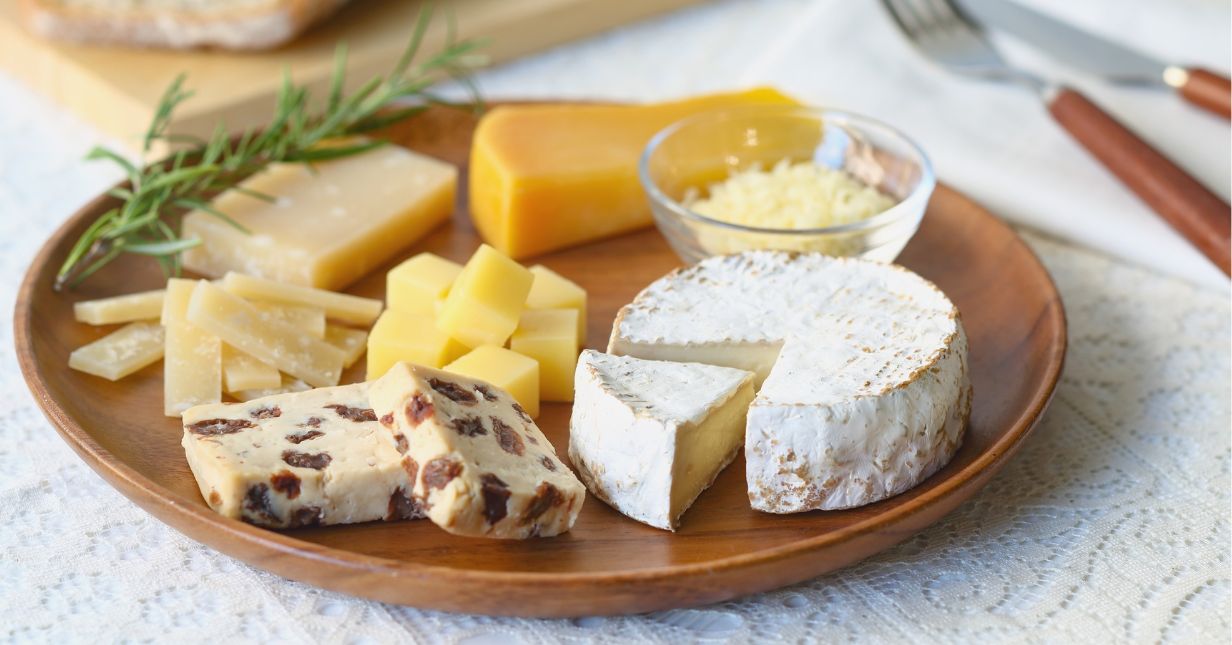Wisconsin Dairy Guide: The Healthiest Cheeses and How to Use Them in Recipes

Medically reviewed by Chrissy Boe, senior community wellness coordinator at Network Health
7/14/2025
If you’re like most Wisconsinites (and probably most of the human population in general), you love cheese. Being from Wisconsin, we know we’re biased, but we think it’s fair to say that cheese is one of the most delicious foods, hitting the perfect combination between rich flavor, creamy texture and satisfying saltiness. Plus, that unique flavor seems to work with so many different dishes if you pick the right variety of cheese.
But there’s one big problem. That bag of fried cheese curds from the drive-thru or the full-fat cheddar you can’t stop grating onto all your vegetables isn’t exactly healthy. It’s not exactly unhealthy, but let’s be real… it can be hard to eat them in moderation. If you pick the right cheese and the right portions, however, it is possible to eat healthy cheese and use them to enhance your recipes without going overboard.
What Makes a Cheese Healthy
You sometimes hear people talk about cheese as being unhealthy because, after all, it is often high in fat and has sodium. This can be true. In other instances, you might hear someone talk about cheese as being healthy because, after all, it is a source of protein and calcium.
As with many foods, the truth is somewhere in between. Cheese doesn’t have to be inherently healthy or unhealthy. Portions matter. But some cheeses are healthier than others if you’re trying to reduce your consumption of saturated fats or avoid processed foods. What ultimately determines whether a cheese leans toward the healthier end of the spectrum is the amount of saturated fat, sodium, protein and calcium, whether it is minimally processed, and ultimately, how much of it you’re eating.
The Healthiest Cheeses to Keep in Your Fridge
-
Cottage Cheese
Most people either love cottage cheese or hate it. If you enjoy it, however, it can be a healthy source of protein and calcium. Cottage cheese is often available in low fat varieties, and it’s versatile to use in recipes, pairing well with fruit, tomatoes or scrambled eggs.
-
Mozzarella (part-skim)
Mozzarella is a lower fat cheese and may be the source for one of your kids’ favorite snacks… string cheese. In any form, however, it can be a healthy source of calcium that can be used on sandwiches, salads or even homemade pizza.
-
Ricotta (part-skim)
Soft and creamy, Ricotta is a cheese you might associate most with lasagna or other pasta dishes. It can also be great with toast and pairs well with fruit or honey.
-
Feta (in moderation)
The unique flavor or feta makes it great for salads, grain bowl or omelets. It’s generally low calorie and its strong flavor makes it easy to eat in moderation.
-
Parmesan (real, not powdered)
Real parmesan also has a fairly strong flavor, which is typical or many hard cheeses. This means it’s easier to use it in moderation for vegetables, pasta or even popcorn.
Cheeses to Enjoy Occasionally
Some cheeses are delicious but may be less friendly to your heart and blood pressure. You don’t need to avoid them entirely, but keep an eye on portions and how often you eat them. Here are some examples to enjoy in a limited way.
-
Processed Cheese Slides (like American singles)
These often contain added oils, preservatives and artificial ingredients. In fact, they may not even technically be real cheese.
-
Spray cheese or shelf-stable cheese spreads
Sodium is one of the reasons we all enjoy cheese so much, but these varieties can have a lot of it, with very little actual cheese content. And really, it doesn’t taste nearly as good as the real thing anyway.
-
Full-fat cheddar
We love a good cheddar cheese here in Wisconsin. It’s rich and flavorful but also high in saturated fat and sodium. By all means, enjoy in small amounts, but do so in moderation.
-
Blue cheese
The bold flavor of blue cheese is off putting to some but a delicacy to others. That comes from its high fat and salt content, though, so it should be used sparingly. A little crumble on steak or salad is all you need.
-
Cream cheese
It may be soft and tasty, but cream cheese offers less protein than many cheeses while still being high in fat. It can be a versatile ingredient for recipes, but don’t use too much.
![]() If you like this article, follow us on Facebook for more like it.
If you like this article, follow us on Facebook for more like it.
Cheesy Recipes That Keep You Eating Healthy
Now that you know which cheeses are healthier, let’s look at some recipes that help you use them in moderation. These recipes add a cheesy flavor without taking over, offering the taste you love without all the calories, fat or salt.
Whole-Grain Veggie Flatbread with Herbed Ricotta
Why it works: Ricotta adds creaminess instead of a heavy sauce or full layer of cheese
How to make it
- Toast a whole-wheat flatbread or naan
- Spread with ¼ cup part-skim ricotta mixed with chopped basil, lemon zest and black pepper
- Top with roasted zucchini, cherry tomatoes and a handful of arugula
- Finish with a drizzle of olive oil or balsamic
Cottage Cheese Ranch Veggie Dip
Why it works: Uses protein-packed cottage cheese instead of mayo or sour cream
How to make it
- Blend 1 cup low-fat cottage cheese with ranch seasoning (or garlic, dill and onion powder)
- Add a splash of lemon juice and blend until smooth
- Use as a dip for cucumbers, carrots or bell peppers, or spread on sandwiches instead of dressing
Caramelized Onion and Swiss-Stuffed Sweet Potatoes
Why it works: Small amount of melty cheese gives huge flavor payoff in a hearty base
How to make it
- Roast sweet potatoes until soft
- Sauté sliced onions low and slow until caramelized
- Slice potatoes open and stuff with onions, spinach and a small slice of Swiss or Gruyère
- Bake 5 more minutes to melt
Zucchini Noodle “Alfredo” with Parmesan Boost
Why it works: Parmesan adds savory depth without the heavy cream
How to make it
- Spiralize zucchini and lightly sauté
- Toss with a sauce of blended cauliflower, garlic, broth, and a splash of milk
- Stir in 2 tablespoons of freshly grated Parmesan per serving
- Top with lemon zest and fresh herbs
Mediterranean Wrap with Hummus and Feta Crumble
Why it works: Feta is used sparingly as a salty element, not the main filling
How to make it
- Use a whole-grain wrap
- Spread hummus, add cucumber slices, shredded carrot, olives and leafy greens
- Add 1 tablespoon of crumbled feta
- Wrap and go
[Read more: Cheese and Other Ingredients That Can Make Your Salads Unhealthy]
The point is, cheese doesn’t have to be avoided. You can still enjoy the occasional cheese curd or slice of sharp cheddar. Just do it in moderation, and if you want a cheesy meal for lunch or dinner, consider healthier cheese varieties.
Resources
https://www.womenshealthmag.com/food/a64367947/healthiest-cheese-you-should-eat/
https://preventcancer.org/article/five-of-the-healthiest-cheeses/



